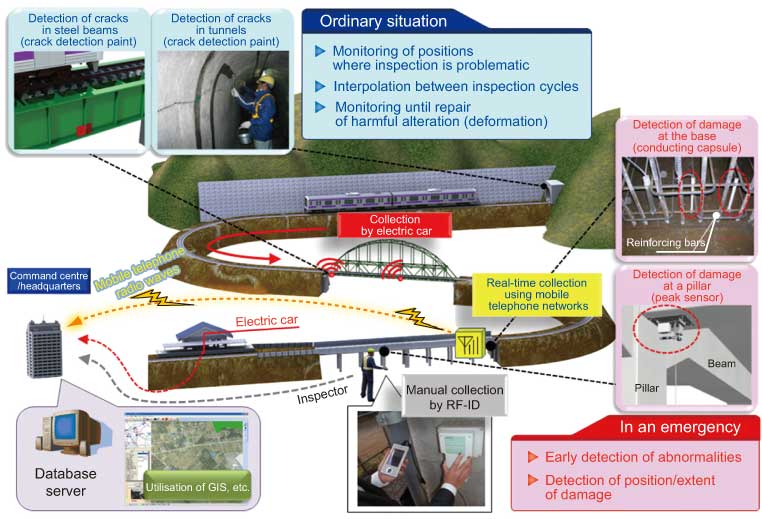3. System for monitoring railway structure fitness
- The RTRI developed a prototype monitoring system incorporating a sensor to detect major alterations (deformation) to railway structures and collect or transmit various types of data.
- The system can select the sensor and/or transmission device corresponding to a monitoring requirement in both ordinary or abnormal situations.
RTRI developed a monitoring system to allow effective and efficient maintenance and control of railway structures. It offers the advantage (Fig. 1) of being able to select sensors, including existing ones, capable of appropriately measuring harmful alterations (deformation) to structures according to specific purposes (e.g. monitoring positions where inspection is problematic, early detection of abnormalities such as earthquakes, etc.).
In addition a series of different methods were developed to transmit data from the sensors to the command centre/headquarters including electric cars, real-time collection by means of mobile telephone networks, and manual collection using micro radio chips (RF-ID). This allows individual railway companies to adapt the configuration of the railway structure monitoring system to their needs, according to the degree of importance of certain sections, monitoring goals, specific conditions (e.g. structure types, harmful alteration (deformation) types) and maintenance costs.
Installation of these sensors on actual structures and validation of measurement accuracy, weather resistance, etc., confirmed that the level of accuracy which could be achieved in the field was sufficient. Tests were carried out on sensors and data transmission equipment on RTRI’s test line with a full mock up of the network to check all the functions to be used in actual operation. It was thus confirmed that data collection from multiple sensors was reliable. In the future, RTRI plans to continue trial operations and verify long-term durability.
 Fig. 1 Railway structure monitoring system
Fig. 1 Railway structure monitoring system